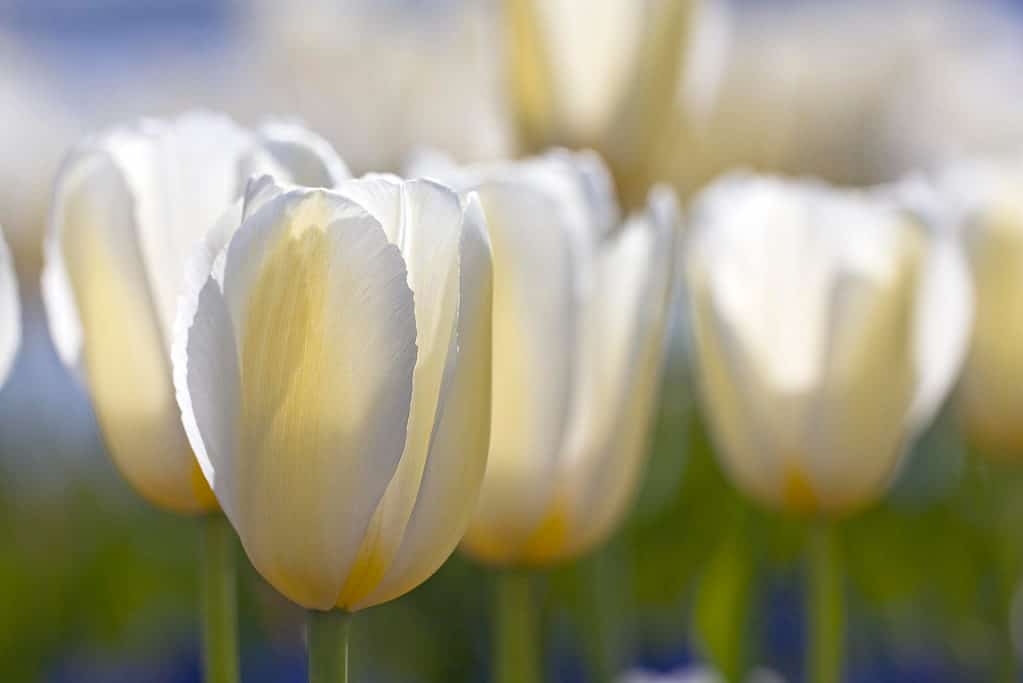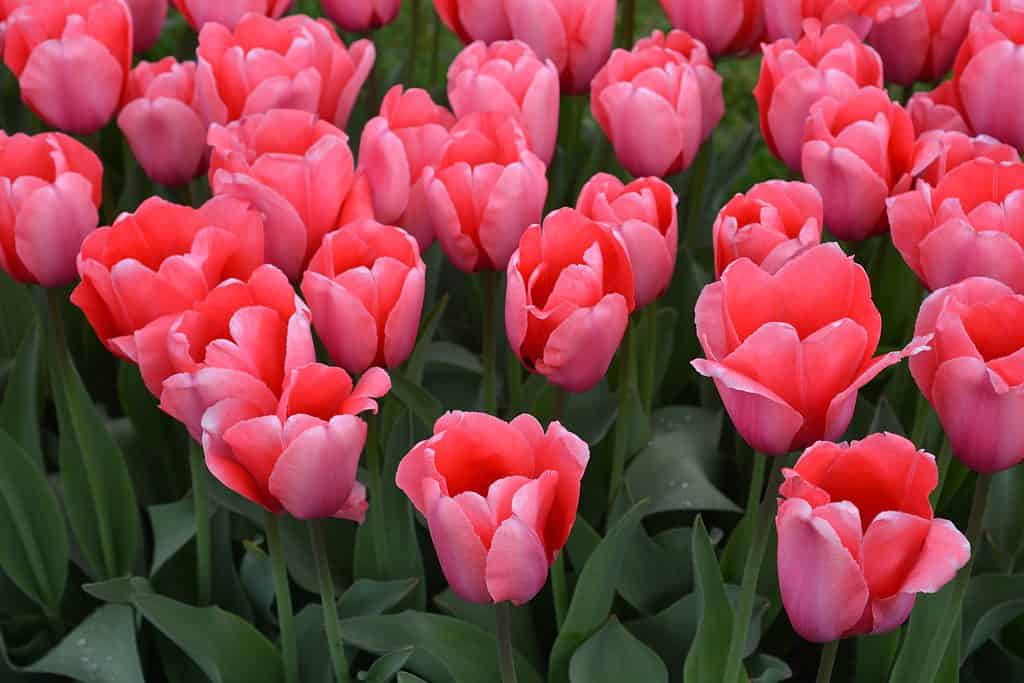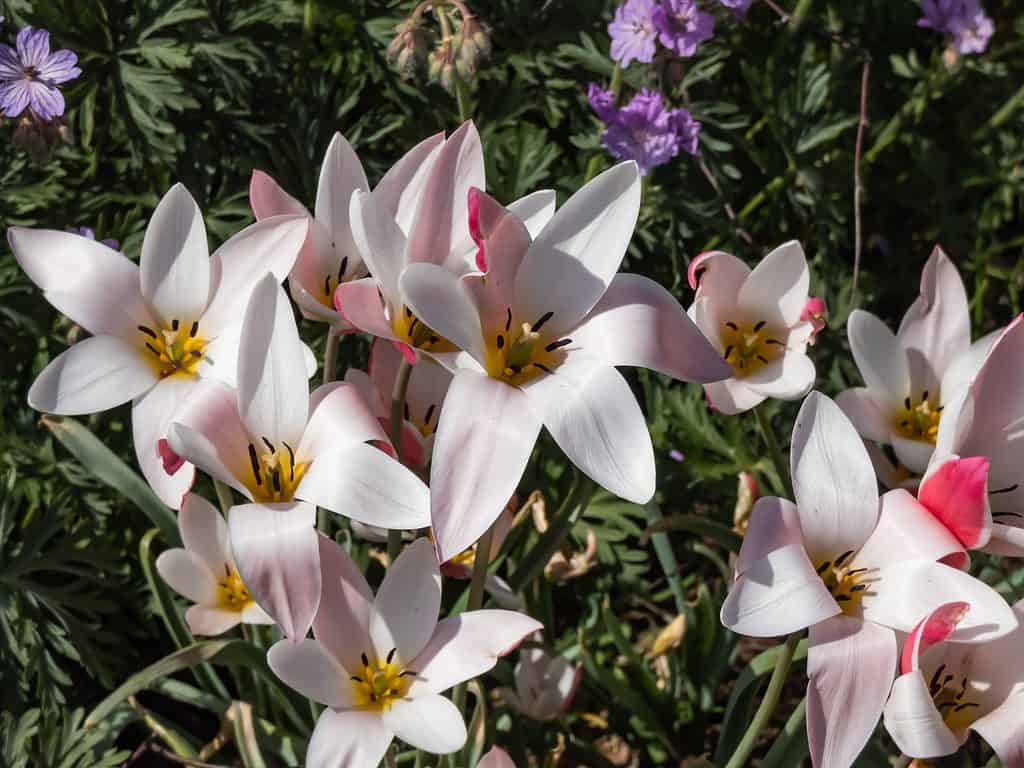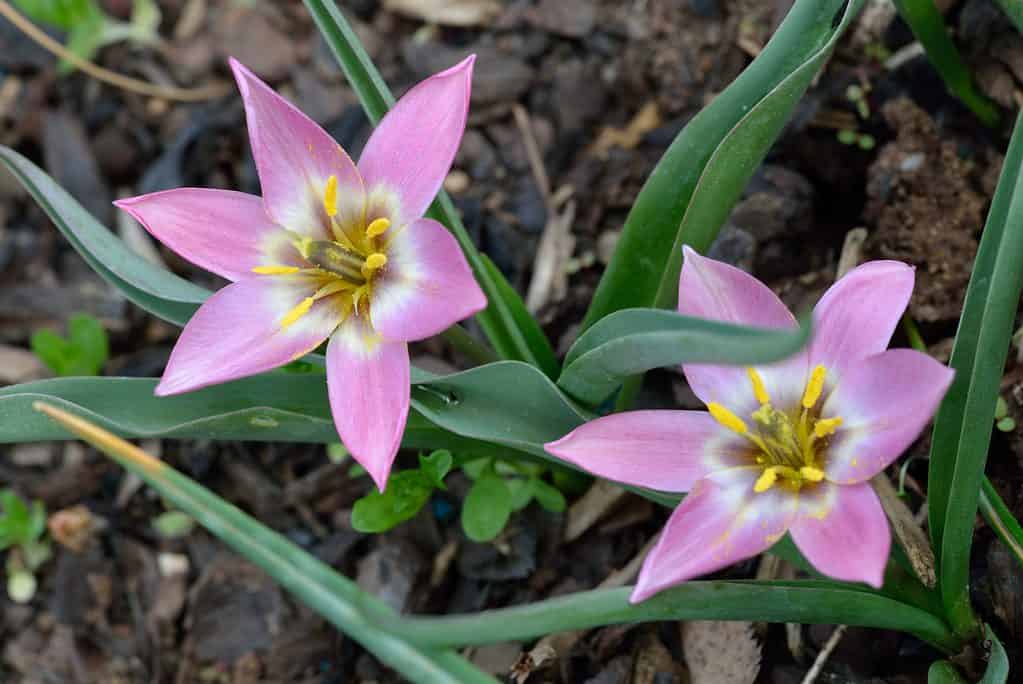The Climate of New Hampshire
The gardening climate in the state of New Hampshire is ideal for many flowers and plants. Summers are warm, with temperatures reaching into the mid-80s Fahrenheit, while winters can be cold, with temperatures dipping below zero degrees. With moderate rain throughout the year and fertile soil, it’s an ideal environment for growing tulips. Wide varieties of bulbs do well in New Hampshire’s climate as long as they have plenty of sun exposure. During springtime, when temperatures start rising, you’ll find that your garden will come alive with color!
What is a Tulip?
A tulip (genus Tulipa) is a type of flowering bulb that belongs to the lily family (Liliaceae). They are native to Turkey and Central Asia and are widely grown in gardens worldwide. You can find a huge number of cultivars in garden centers.
Tulips have thick, strappy leaves that are a blueish-green color. The individual flowers have a bell-like shape, three petals, and three sepals.
Tulips come in every color except blue, and around 4,000 varieties exist. They range from white to yellow, red to brown, and purple to almost black. Single tulips have one cup-shaped flower on each stem, while double tulips have multiple layers of petals on each stem.
Not only do tulips make your garden look lovely, but they bring a welcomed splash of color indoors after a long winter. They stay fresh in a vase for seven to 10 days.
How to Select Tulip Bulbs
When selecting tulip bulbs for planting in New Hampshire, it is important to pick healthy ones. Healthy bulbs should be firm and heavy, with no soft or mushy spots or mold. If the outer layers are loose, avoid those bulbs, as they may not survive long enough to flower.
Additionally, look out for any signs of pest damage, such as holes or discoloration on the bulb itself. When purchasing from a garden center, check each bulb carefully to ensure that you get quality plants that will bloom beautifully come springtime!
Types of Tulips for New Hampshire
There are a variety of tulips that thrive in the New Hampshire climate. Not only do they add color to your garden each spring, but their bright blooms also bring much-needed cheer after the cold winter months. Here are four tulips to plant in your New Hampshire garden.
Tulipa’ Maureen’

The white Maureen tulip has a bright yellow center, which contrasts beautifully with the silky white petals.
©imageBROKER.com/Shutterstock.com
Maureen is a cultivar that offers a pure white, goblet-shaped bloom. The bright yellow center of the flower contrasts beautifully with the silky white petals for an attractive display. It was introduced in the 1950s and has been a favorite ever since. This tulip is a single late variety and blooms in late April and early May. It grows 24-26 inches tall and makes a lovely cut flower.
Tulipa ‘Pink Impression’

Pink impressions produce large flowers with a mixture of soft pink and deep rose-colored petals.
©Nahhana/Shutterstock.com
Pink impression is a mid to late variety that is excellent in the coldest climates. It blooms from mid-April to mid-May. It is considered highly weather resistant, which makes it a perfect choice for gardeners in New Hampshire.
Pink impression produces large flowers with a mixture of soft pink and deep rose-colored petals. It is 20-24 inches tall and a good choice for naturalizing in large quantities.
Tulipa’ Lady Jane’

The inside of the flower is pure white with a strong yellow center and dark black stamens.
©Kristine Rad/Shutterstock.com
Lady Jane is a dwarf variety that grows 10 inches tall and opens wider than classic tulip varieties. Its uniquely colored petals are red with a yellow base on the outside of the flower. On the inside of the flower, they are pure white with a strong yellow center and dark black stamens.
Lady Jane tulips are best suited to eight hours of sunlight and nutrient-dense soil. They make for a charming vase flower, as you can admire their unique colors up close.
Tulipa’ Aucheriana’

Aucher tulips are pink flowers shaped like stars and have tall bright yellow stamens reaching toward the sky.
©Walter Erhardt/Shutterstock.com
Also called Aucher’s tulip, this award-winning variety is highly scented! The pink flowers are shaped like stars and have tall bright yellow stamens reaching toward the sky. Each bloom is 3 inches across, set atop apple-green leaves.
Tulipa’ Aucheriana’ is ideal for rock or alpine gardens, as well as raised beds or containers. It grows to a height of 4-10 inches and makes your whole house smell amazing when you bring them inside.
Tulips in Containers
Planting tulip bulbs is a relatively easy process. Begin by gathering the necessary supplies: tulip bulbs, potting soil, and planting pots or containers. Once you have these materials at hand, fill each container with potting soil just below its brim and make sure there are enough drainage holes in the bottom of the pot for excess water to escape.
Place the bulb in each container with the pointy end facing upward so it looks like an upside-down lightbulb, then cover it lightly with more soil until it’s completely hidden from view. Water thoroughly after planting, and place your pots outdoors, where they will receive plenty of sunlight throughout the day. New shoots should begin emerging in March or April.
Planting Tulips
When planting tulip bulbs in New Hampshire, the best time to plant them is during the fall, before the ground has frozen solid. It’s important to start preparing for your tulips early, as you may need extra time and preparation if you want to plant them in large quantities.
Start by selecting a sunny spot with well-drained soil. Dig holes about 6 inches deep and 4 inches apart, ensuring that each hole contains enough space for one bulb plus 1 inch of soil above it when filled back in. It is best to mix in some compost or fertilizer with the soil. This organic material will help ensure they have access to all the nutrients necessary for optimal growth. Place the bulb with the pointed end up, then fill in the soil and lightly press down around each bulb. Water thoroughly after planting until the ground is saturated. This method will help ensure that your plants get off to a good start!
Tulips need plenty of sunlight throughout their growing season, at least eight hours a day, in order to bloom properly. The good news is that tulips are not particularly attractive to common garden bugs or diseases. Additionally, since tulip bulbs can last up to 10 years, you can enjoy many seasons of beautiful blooms!
Protecting Bulbs from Wildlife
Deer and rabbits are especially fond of delicious tulip leaves. Elk and moose will bite them clear down to the ground, leaving a disappointing stump behind. Squirrels, voles, moles, and chipmunks will dig up the bulb itself and eat it in winter.
To stop animals from consuming the bulbs, you can plant them alongside strong-smelling plants like blood meal or garlic. Another trick is to grow them in pea gravel or sharp rocks to keep the rodents away. Planting tulip bulbs in clusters and protecting them with wire cages can effectively keep them safe from wildlife. The cages should have a top you can lift off, so the bulbs are always accessible for division when needed.
NEXT UP:
- Daffodil vs Tulip: What Are Their Differences?
- Discover The National Flower of The Netherlands: The Tulip
- Discover The National Flower of Hungary: The Tulip
The photo featured at the top of this post is © MBL1/Shutterstock.com
Thank you for reading! Have some feedback for us? Contact the AZ Animals editorial team.






